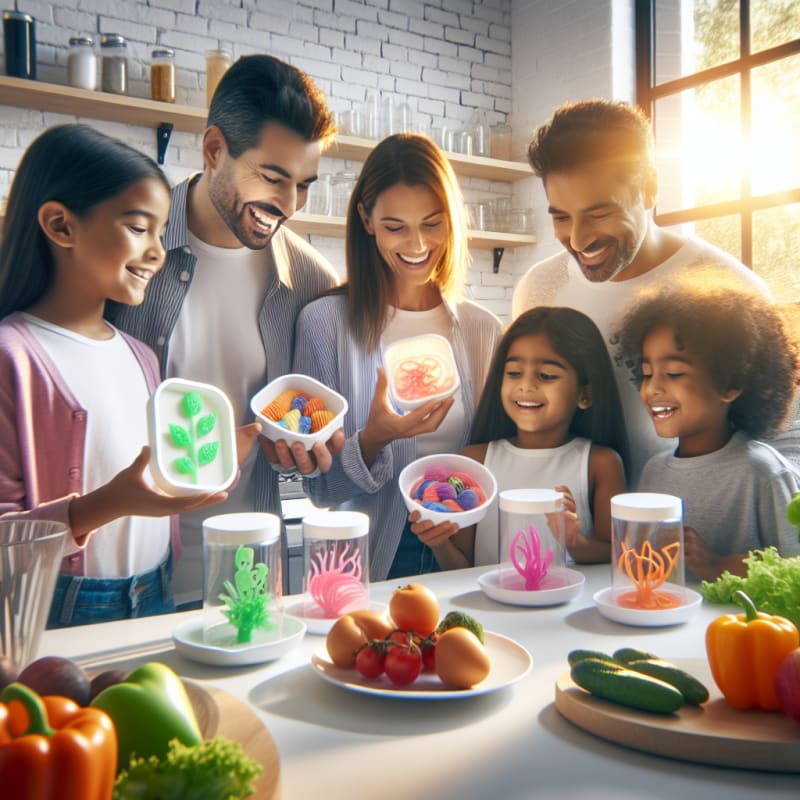3D Bioprinting of Plant and Animal Cell-Based Hybrid Food: Safety, Trends, and Tools for Smart Eating
Imagine this: You’re a parent picking up dinner at the grocery store. Your child has a severe dairy allergy and is curious about the new “hybrid” burgers on the shelf. The label says “3D bioprinted, plant and animal cell-based.” You wonder: Is it safe? What’s actually inside? How do you know if it’s right for your family?
Welcome to the future of food—where 3D bioprinting is revolutionizing how we eat, blending plant and animal cells into innovative, sustainable products. But with new technology comes new questions about food safety, labeling, and dietary fit. Let’s break down what you need to know, how global regulations compare, and how tools like Food Scan Genius can help you make informed choices.
What Is 3D Bioprinting of Hybrid Foods?
3D bioprinting uses advanced printers to layer living plant and animal cells, creating foods that mimic the taste, texture, and nutrition of traditional meat and dairy—without conventional farming. Recent research in Nature highlights how scientists are combining pea protein, animal fat cells, and plant-based scaffolds to produce “hybrid” steaks and burgers with customizable nutrition profiles1.
| Feature | Traditional Meat | 3D Bioprinted Hybrid |
|---|---|---|
| Source | Animal farming | Plant & animal cells, no slaughter |
| Customization | Limited | High (nutrients, texture, flavor) |
| Allergen Risk | Known | Varies (depends on ingredients) |
| Labeling | Regulated | Evolving |
Food Safety, Allergens, and Labeling: What Consumers Need to Know
Are 3D Bioprinted Hybrid Foods Safe?
According to the U.S. FDA, all novel foods must undergo rigorous safety assessments, including allergenicity, toxicity, and nutritional value2. The European Food Safety Authority (EFSA) applies similar standards in the EU3. However, because 3D bioprinted foods can blend multiple sources, consumers with allergies or sensitivities should pay close attention to ingredient disclosures.
- Allergen Disclosure: In the US, the FDA requires clear labeling of the top 9 allergens (including milk, eggs, fish, peanuts, tree nuts, soy, wheat, sesame, and shellfish). The EU mandates disclosure of 14 allergens, including celery, mustard, and lupin.
- Ingredient Transparency: Both the US and EU require ingredient lists, but hybrid foods may use novel terms (e.g., “cultured fat,” “pea protein scaffold”). Always check for updates as regulations evolve.
Labeling Laws: US vs EU
| Region | Allergen Disclosure | Labeling Authority | Novel Food Regulation |
|---|---|---|---|
| United States | 9 major allergens | FDA | GRAS/Novel Food Review |
| European Union | 14 allergens | EFSA | Novel Food Regulation (EU) 2015/2283 |
Current News: Food Safety Alerts, Trends, and Regulations
- Food Safety Alert: The recent recall of ground beef due to E. coli contamination highlights the importance of traceability and transparency in all foods, including bioprinted products.
- Emerging Trends: According to Food Dive, plant-based and hybrid foods are surging in popularity, with consumers seeking sustainable, ethical, and allergen-friendly options.
- Labeling Updates: The FDA’s new guidance on “cell-cultured” labeling aims to ensure consumers understand what’s in their food (FDA.gov).
For people with food sensitivities, these developments underscore the need for clear, accessible ingredient information—and tools to simplify smart choices.
How Food Scan Genius Empowers Smart Food Choices
Food Scan Genius is designed for anyone navigating allergies, sensitivities, or dietary preferences. Simply scan a product barcode, and the app instantly reveals:
- Full ingredient list (including novel ingredients in 3D bioprinted foods)
- Allergen alerts (customized to your profile)
- Regulatory compliance (US vs EU labeling differences)
- Recent food safety alerts or recalls
User Testimonial: “As a parent of a child with multiple food allergies, I rely on Food Scan Genius every time I shop. It helped me confidently try a new hybrid burger, knowing exactly what was inside. I recommend it to anyone who wants peace of mind!” — Jessica L., Boston
Download Food Scan Genius to scan, decode, and make safer food choices—especially as new foods like 3D bioprinted hybrids hit the shelves.
FAQs: 3D Bioprinting, Food Safety, and Smart Shopping
What are 3D bioprinted hybrid foods?
3D bioprinted hybrid foods are made by layering plant and animal cells using advanced printing technology, creating products that mimic traditional meat and dairy with customizable nutrition and sustainability benefits.
Are these foods safe for people with allergies?
Safety depends on the specific ingredients used. Always check labels for allergens, and use tools like Food Scan Genius to identify hidden risks, especially as labeling evolves.
How do US and EU labeling laws differ for hybrid foods?
The US requires disclosure of 9 major allergens, while the EU requires 14. Both regions regulate ingredient lists, but the EU has stricter rules for novel foods. Always review labels and use trusted apps for clarity.
How can I stay updated on food safety alerts?
Follow FDA and EFSA updates, and use Food Scan Genius to receive instant alerts about recalls or contamination risks relevant to your dietary profile.
Conclusion: Making Smart Choices in a Changing Food Landscape
As 3D bioprinted hybrid foods become more common, understanding what’s in your food—and how it’s labeled—is more important than ever. Whether you’re navigating allergies, ethical concerns, or just want to try the latest food innovation, knowledge is power. With resources like Food Scan Genius, you can scan, decode, and enjoy new foods with confidence—turning dietary dilemmas into delicious discoveries.
References:
1. Nature: 3D bioprinting of plant and animal cell-based hybrid food
2. FDA: Food Ingredients and Colors
3. EFSA: Novel Food
4. CNN: Ground beef recall
5. Food Dive: Plant-based food trends





